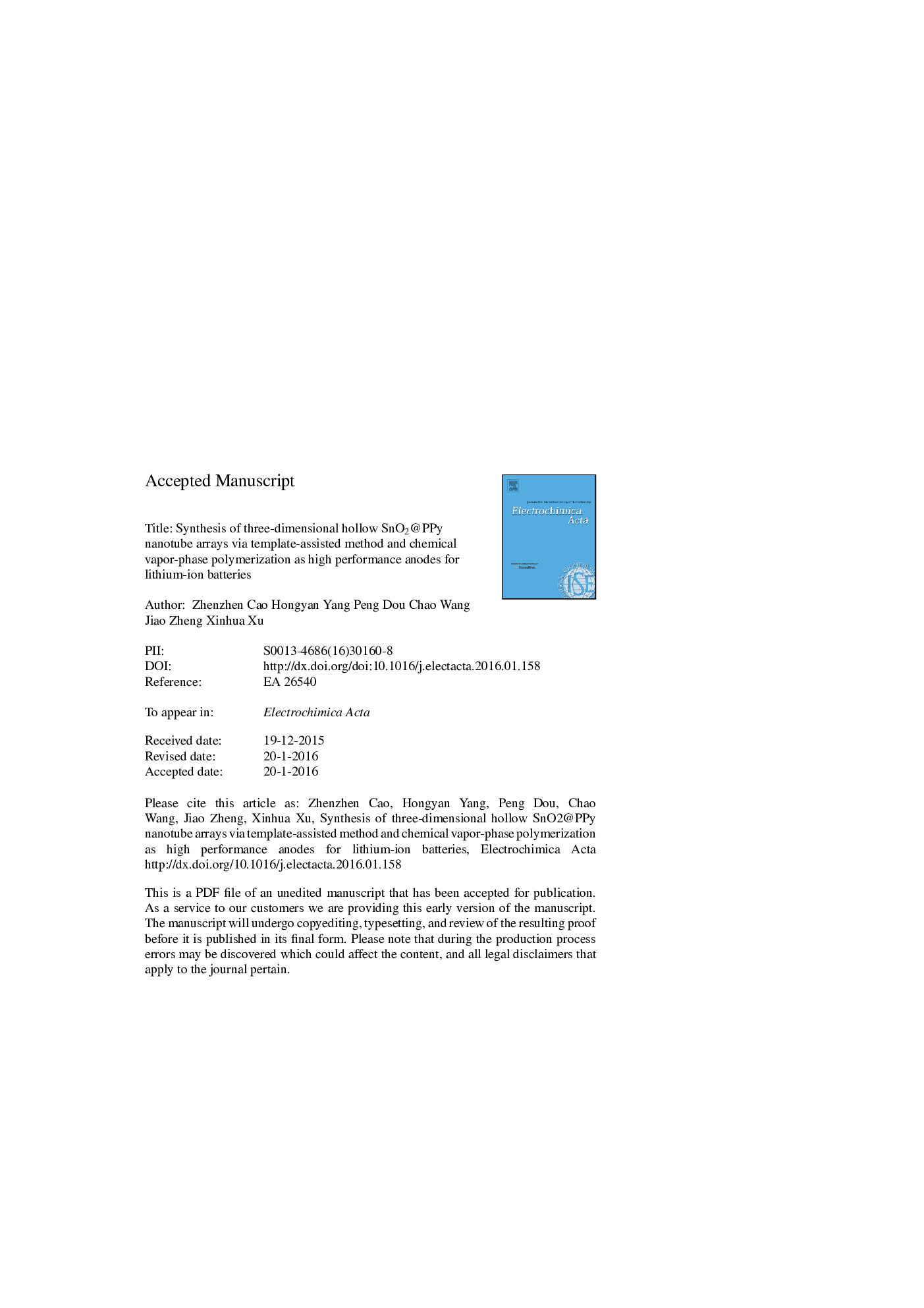| Article ID | Journal | Published Year | Pages | File Type |
|---|---|---|---|---|
| 6607065 | Electrochimica Acta | 2016 | 37 Pages |
Abstract
A novel polypyrrole (PPy) coated three-dimensional (3D) SnO2 nanotube arrays (SnO2@PPy) is synthesized via a template-assisted method followed by a chemical vapor-phase polymerization process as a high performance anode for lithium-ion batteries. In this new type electrode material, the hollow interiors of SnO2 are able to provide enough spaces for the accommodation of large volume expansion during the insertion of lithium-ion, making for the improvement of the stability of electrode. Meanwhile, the addition of conductive PPy layer could facilitate the electron transport, prevent the aggregation of active materials and warrant the stability of as-formed solid electrolyte interface (SEI) films. As a result, the integration of 3D hybrid nanostructure electrode is capable of retaining a high capacity of 646 mA h gâ1 after 150 cycles with a coulomb efficiency above 98% and a capacity retention of 221 mA h gâ1 even at a high current density of 5000 mA gâ1, revealing better cycling and rate properties compared with bare SnO2 nanotube arrays anode. This nanoengineering strategy can provide a facile and controllable way to synthesize other anode materials for lithium-ion batteries.
Related Topics
Physical Sciences and Engineering
Chemical Engineering
Chemical Engineering (General)
Authors
Zhenzhen Cao, Hongyan Yang, Peng Dou, Chao Wang, Jiao Zheng, Xinhua Xu,
